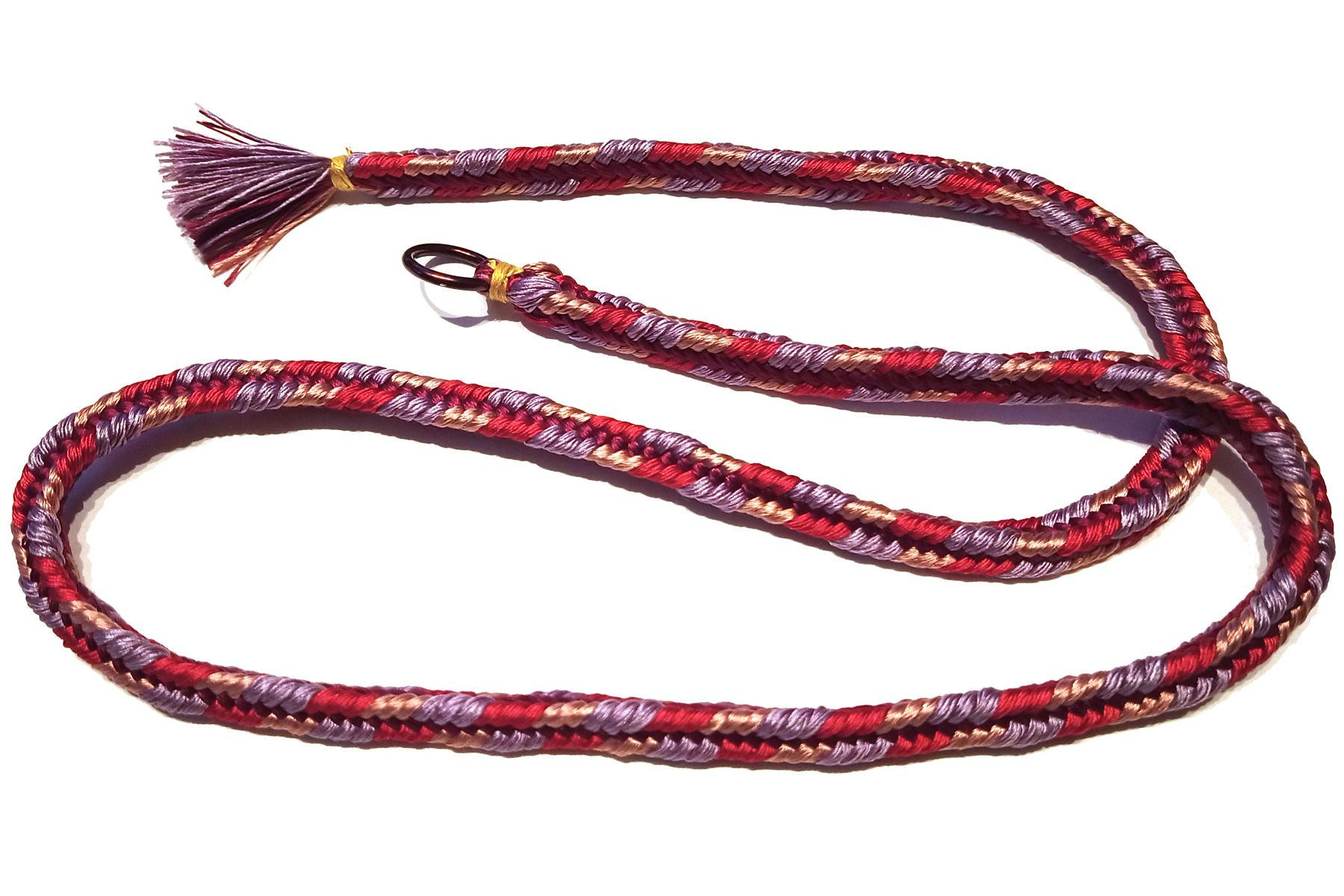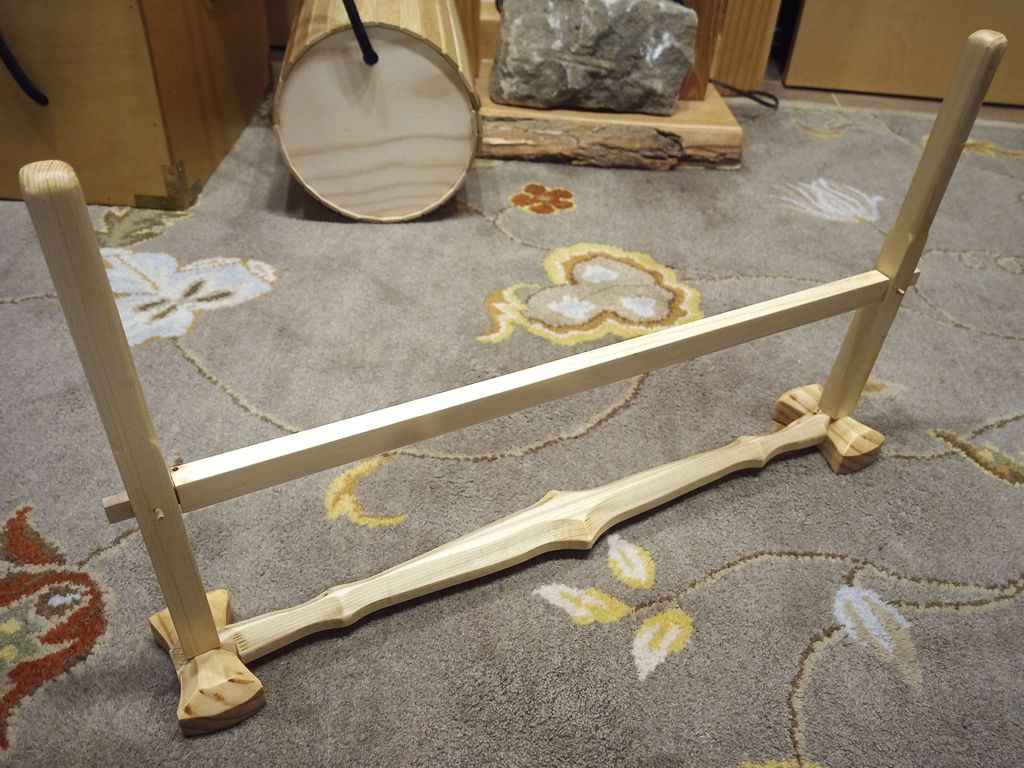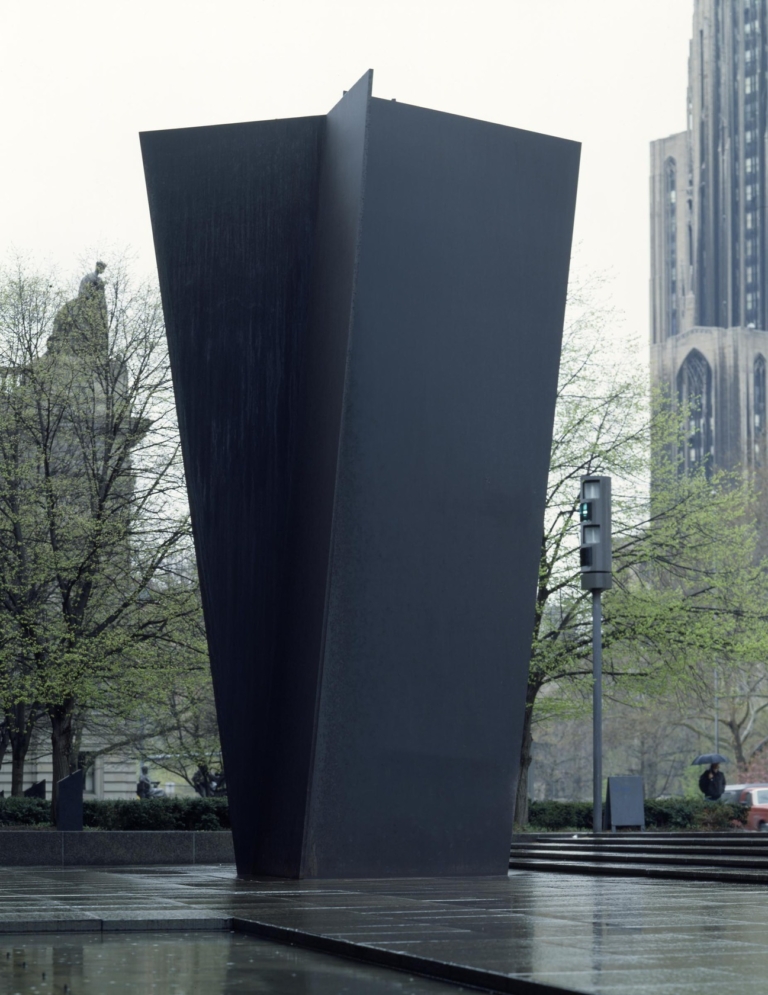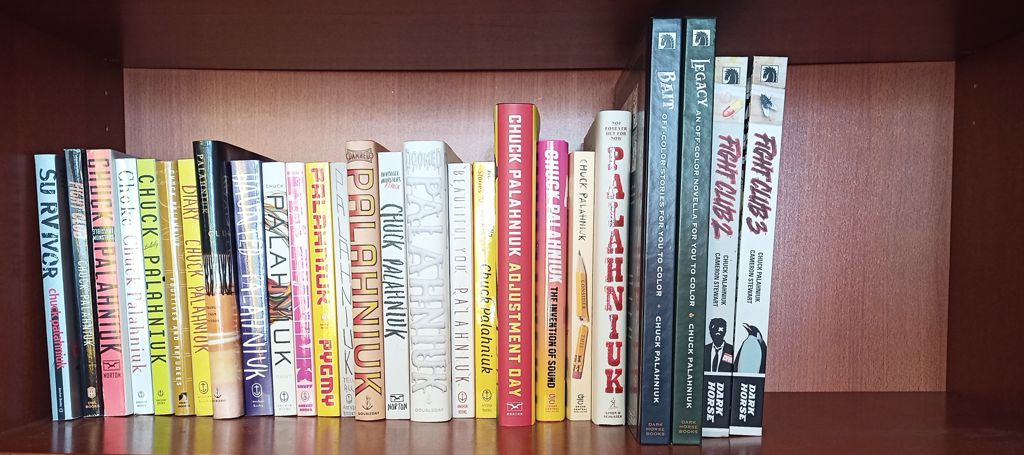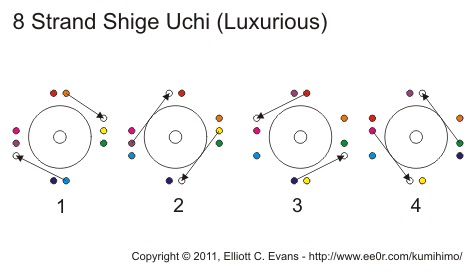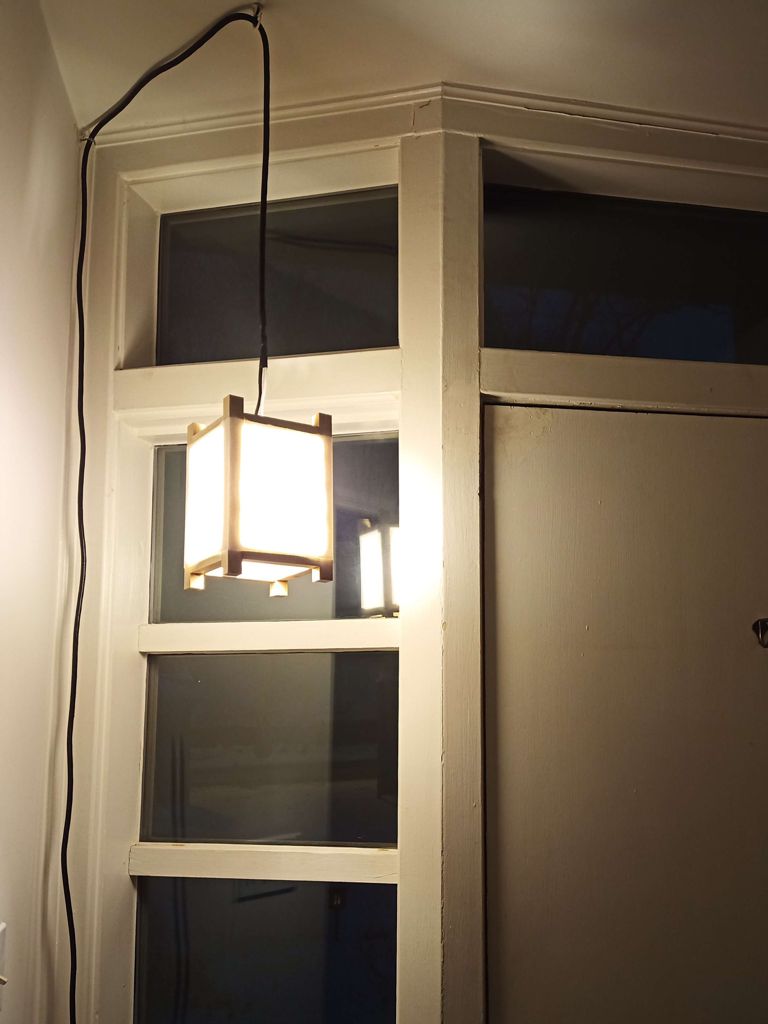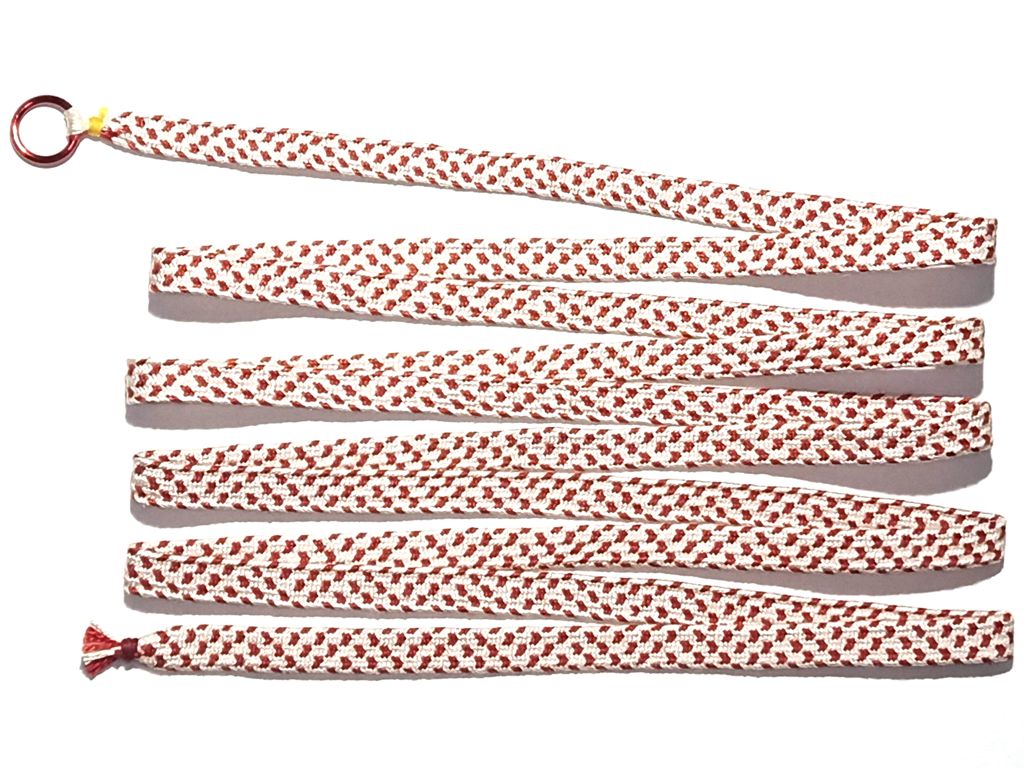More than ten years ago, I made a couple of small “boxes” (box1 box2) by wrapping bamboo sushi rolling mats around blocks of wood. Those two little boxes are still in use, and still going strong, so when I saw the RÖDEBY bamboo “armrest tray”, I knew just what I wanted to do.
The Roedeby comprises thirty bamboo slats that are bonded to a flexible canvas backer. I cut two 7.5 inch disks from pine board, and combined it with some hardware to make this satchel-
The bamboo is both glued and nailed to the pine disks, so it should be pretty sturdy. I attached the sling cord by drilling through the disks and then inserting the ends of the rope and tying stopper knots inside. the “latch” is a couple of brass cotter pins that are secured to the inner layer of bamboo and project through a couple of holes drilled in the outer layer of bamboo. In the above photo, the latch is secured with a small brass “lock” that I acquired at Pennsic a couple of years ago. Here it is open-
You can see that there is quite a lot of space inside. I haven’t tried stuffing it, but I bet you could actually get 3 full-size bottles in there. It should be big enough for a small selection of tools, or a big lunch. I didn’t base it on anything I’ve seen anywhere, so I wouldn’t call it a medieval or Japanese woodworking project, but it’s a handy object that won’t be too disruptive if I carry it to an SCA event.






